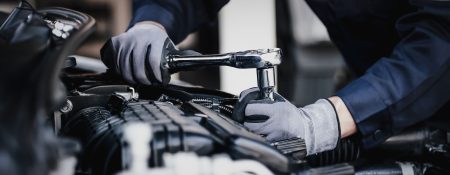
Author: Muhamad Omari from carwise.ae
Airbags are so essential now so that so you have to disclose to the buyer that they have been deployed when thinking of selling your car.
Like most great inventions, the airbag was not the work of one man, but rather that of a long line of discoveries.
The idea of seat cushions dates back to the early 1950s. A handful of American engineers had a hunch of what would become the biggest breakthrough in passive safety after the three-point belt.
Yet, there was a long way to go. The famous inflatable bag which the specialist journals announced is coming soon has not yet left the laboratory grounds.
To go from theory to practice, they had to choose the fabric of the bag, its location, its volume, etc. Not to mention the thorny problem of its inflation.
Very early on, General Motors was the leader in the airbag race by deciding to rely on a small explosive charge rather than compressed air or liquefied gas to ensure the rapid inflation of the vehicle bag. A major step forward!
But it all came to an abrupt halt in 1974 when an unexpected system explosion killed a developer.
The Big Three of Detroit (General Motors, Ford, and Daimler Chrysler aka Mercedes) officially announced their intention to give up on the idea of airbags.
That same year, the Italian magazine “Quattroruote” announced that “the airbag probably doesn’t have a great future”.
Everyone then agreed that an explosive charge is incompatible with the environment of a moving automobile.
Not to talk about convincing drivers of carrying a few grams of explosives under the hood.
At a time when the seat belt was still an accessory for amateur drivers, the goal seemed out of reach.

Even so, the leaders of Daimler-Benz took a decision that still surprises those involved in this adventure.
Against all expectations, the failure did not lead to the abandonment of studies carried out by Mercedes-Benz since 1967.
In 1974, the researchers refused to give up their research. They believed in the enormous potential of the airbag as a supplemental restraint system, supplementing the seat belt.
This approach was different from that of the American public authorities, which pictured the airbag replacing the seat belt.
This forced the engineers at GM to design large powerful and therefore unnecessarily violent bags. The Germans were aiming for a smaller volume: an idea that will prove to be the key to success.
A former safety officer at Mercedes-Benz said that in the mid-1960s, they did not have the technology needed in Germany, while Americans had already filed for patents for a quick-inflating cushion in the flywheel.
So they negotiated with two companies in Utah and Arizona that specialize in missile thrusters. Mercedes’s goal was to get their generators to study in Sindelfingen and manufacture them in Germany.
Bayern-Chemie was responsible for producing the first pyrotechnic cartridges. As for the deceleration sensor triggering the firing, Bosch finalized it.
“I remember that my first responsibility, once assigned to this project, was to go for a compulsory two-week training course provided by the army devoted to the handling of explosives!” Says Dr. Luigi Brambilla, who worked on the airbag at Mercedes-Benz between 1970 and 2002.
At that time, the airbag system was still considered an explosive product, like a grenade or a mine.
They persisted that copying the missile propulsion mode was the solution. They had to make sure that the gases released were trapped in a suitable bag.
In the beginning, they tested liquefied freon gas under pressure. When triggered, the freon heated in a fraction of a second by the combustion of a propellant charge: it regained its gaseous form and then inflated the bag. But the process was not without risk: sometimes the bag would come apart!
Engineers had to solve many unexpected problems by resorting to some of the most bizarre solutions and methods. It took thirteen long years to complete the development of the airbag and bring it to market.
It was 1980: the Mercedes-Benz S-Class Type W126 introduced the airbag and the pre-tensioner belt. The German engineers thus recalled that both of these two safety devices must work together.
At first, many customers did not want to hear about it. The only thing they were sure of was that the airbag created a lot of damage, noise, and acrid fumes.
On the other hand, they trusted Mercedes-Benz. They knew that when it puts its name on innovation, it has to be good and that the value of the car is a top priority for them.
In 1994, Professor Huber and all his colleagues associated with the development of the safety cushion received the Safety Trophy from the US Department of Transportation.
Since 1980, all the studies carried out in the USA, Germany, and around the world have concluded that the airbag is effective and has saved thousands of lives.
Mercedes-Benz signed many other great firsts in this area (the first passenger, side, and curtain airbags) and continues its research to this day.
With the second generation of its PRE SAFE system, the manufacturer is moving towards extensive interaction between all the protection systems in the vehicle.
Ultimately, the deployment of the cushions takes into account not only the presence of passengers but also their position, and their mass to reduce the violence of contact with the famous white cushion.



